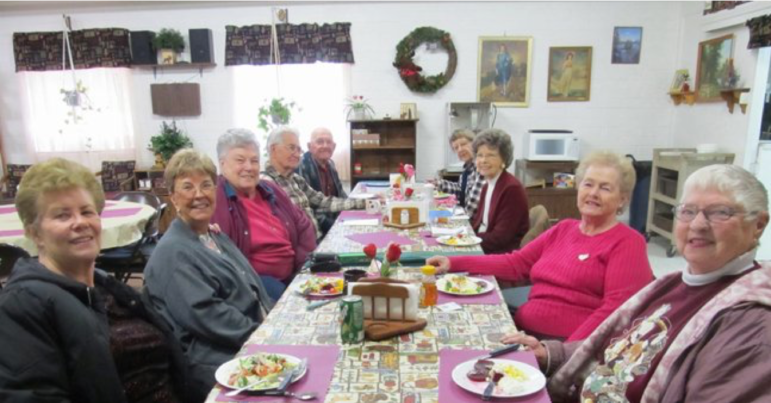
NYC DFTA
Food is an important element in senior health, and in Social Adult Day Care programs.
In New York City, the Social Adult Day Care (SADC) program has evolved into a lifeline for many elderly immigrants with chronic disease. Why aren’t we using it more?
Medicaid redesign allows the SADC program to address many of the barriers to healthcare and social services that elderly immigrant with impairments faced in New York City. These barriers include cultural, religious, food preferences and distinctive lifestyles. Barriers to healthcare, research has shown, cause more expensive emergency procedures.
SADC is a covered service under Medicaid Managed long–term care (MLTC), a system that streamlines the delivery of long–term services to people who are chronically ill or disabled and who wish to stay in their homes and communities. SADC services include personal care, meals and snacks from a menu approved by a registered dietitian, supervision in a secure environment, and socialization activities, aimed at helping participants to achieve optimal physical and mental/cognitive functioning, case co-ordination and transportation.
When MLTC first rolled out in New York, due to concerns about member eligibility and enrollment, there were several negative articles published which included the SADC service. This has continued to overshadow the benefits of adult day care and the needs of the underserved populations in NYC.
Stricter MLTC policies to address enrollment, that were quickly enacted in response to the 2013 coverage, are now out of date given the formation of a conflict-free evaluation enrollment center, and are possibly costing the State millions of dollars’ in inappropriate services.
The SADC program is a solution to the needs of the growing senior population and the caregiver shortage, at an hourly cost less than in-home personal care services.
New York State Medicaid Redesign Team’s (MRT) goals are to reduce avoidable hospital use by 25 percent and to build capacity for population health and value-based care with clinical and non- medical collaboration aimed to improve health outcomes by treating the whole person in impacting the non-medical factors.
The CDC defines; “Conditions in the places where people live, learn, work, and play affect a wide range of health risks and outcomes. These conditions are known as social determinants of health (SDOH), and they account for 80 percent of health outcomes, which means that the majority of our health care costs can be attributed to non-clinical factors.
SADC programs address the root causes of poor health, improve the quality of life for older adults by reducing social isolation and increasing social and community engagement– thus preventing or delaying further deterioration and the need for more expensive services.
For example, food, a key health determinant, is a major element of SADC programs. Having limited English proficiency can be a barrier to accessing health care services and understanding health information, and SADC programs provide translation services, which assist seniors with applying for and accessing benefits and services, handling personal business, and scheduling doctor appointments
Following the critical coverage in 2013, the New York State Department of Health instituted a requirement that anyone qualifying for long-term care must have personal care services in the home. In-home personal care is an inappropriate support for those living in poor, overcrowded conditions, as previously described. Additionally, it created the provision of unnecessary services for those who lived at home with families who were previously providing care at no cost to the state.
In the five boroughs the average cost paid by the Medicaid Managed Long Term Care Company for in home care is $25 per hour, whereas SADC service average cost is around $19 hourly (based on a flat fee of $95 per day, including transportation and meals). With a $4 billion rise in Medicaid costs, it is time to review the in-home care requirement.
As Forbes reported in October 2019, “The growing shortage of paid caregivers has become increasingly apparent over the past several months. Now, we are seeing evidence of the most direct consequence of that scarcity: The cost of care, especially for those living at home, is rising faster than it has in years.”
Not only is the current restriction unhelpful to seniors; it is unnecessary. In 2015, “conflict free evaluation enrollment” was put in place to ensure only qualified persons were enrolled into MLTC and, in turn,, to social day programs.
People attending SADC need these services. Given our growing understanding of the social determinants of health, and the new approach to evaluating eligibility, New York would be wide to widen the use of SADC. It will save a substantial amount in short-term costs and long-term obligations and be better for seniors in New York City and elsewhere.
Yvonne Ward is secretary of the Executive Board at New York State Adult Day Services Association.









One thought on “Opinion: Open the Door Wider to Social Adult Day Care”
Totally agree with you! I am currently doing research on how to open a SADC in NYC. I want to expand the home care business into social adult day care for some of my current patients. I was a little unsure about the Medicaid/MLTC coverage as I cannot find much information on what the rates or costs are as of now in 2024. Are there any updates you could provide me with? I would really appreciate your help!